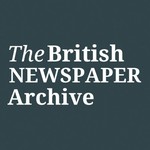Hot Off The Press – New Titles This Week
This week at The Archive we have been busy adding 178,016 brand new pages for you to explore, with the addition of eight brand new titles this week, which cover a range of specialities, from sport to religion, from illustrated news to military information, whilst also covering the counties of Kent, Surrey and Middlesex.
We’ve also updated a wide range of our existing titles, with eighteen titles on The Archive gaining new pages this week. So read on to discover more about all our new and updated titles, as well as to find out about how the Football Association (FA) was formed back in October 1863.
So without any further ado, let’s ring up our first new title of the week, which is religious newspaper the Dial. All of our new newspapers this week have been digitised as part of the British Library’s Heritage Made Digital project, which you can read about here.
With its motto of ‘Whatsoever ye would that men should do to you do ye even so to them,’ Dial was first published on 7 January 1860 at the cost of three pence. It hoped to be a ‘first-class London Daily Journal,’ which would base itself on ‘the principle that ‘Righteousness exalteth a Nation.”
Moreover, Dial was the creation of the National Newspaper League Company. Its first edition gave an overview of the aims of the Company:
Stated in the most comprehensive terms, the aim of the company is to apply the Newspaper Press, on a method not hitherto attempted, to the exercise of a just and vigilant censorship in the interest of the country; and to the supply of accurate information on political, social and religious subjects, to the formation and diffusion of sound opinion on public questions; and to the moral and intellectual instruction of the great body of the people.
Dial, therefore, would be didactic and exercise the utmost care in relaying news to its readers. Indeed, the newspaper contained its own ‘Ethical Column,’ which sat alongside articles addressing parliamentary reform, ‘military and nautical news,’ and literature. Dial also had a focus on religious news, featuring a section entitled ‘The Religious World,’ with news from across Britain’s Christian denominations, from the Church of England to the Primitive Methodists, as well as religious news from further afield, for example from China and Japan.
Our next new title of the week is the Finsbury Free Press. On 30 May 1868 the London City Press wrote how ‘Finsbury is again represented by a newspaper,’ as the Finsbury Free Press had arrived onto the publishing scene a week before, on 23 May 1868.
Costing just one halfpenny, and consisting of four pages, the Finsbury Free Press appeared every Saturday. In its first edition, its publishers described the new publication’s aim:
The object of this paper is to provide the Borough of Finsbury with a representative organ of public opinion similar to that possessed by other Metropolitan Boroughs, and by every other Parliamentary Borough in the United Kingdom.
Meanwhile, the Finsbury Free Press promised to:
…honestly reflect the views both of the electors, and of the thinking portion of the non-electoral body, on all the great and pressing questions of the day, Parliamentary and Financial Reform, Religious Equality, the mutual obligations of Labour and Capital, and the Educational wants of the age. Questions of Economic and Sanitary Reform, in connection with the supply of Gas and Water, and of Parochial Expenditure, will also be treated with like earnestness, independence, and impartiality…
The Finsbury Free Press, moreover, would ‘reflect the inner life of the Borough,’ with its ‘outer life faithfully photographed from week to week.’ To this end, the newspaper featured a range of ‘Local Intelligence,’ from the areas of Finsbury Park, Islington, Clerkenwell, St. Pancras and Holborn, reporting on the Metropolitan Board of Works and vestry elections.
Our next new title is a particularly exciting one, as it is illustrated, and aptly named the Illustrated Times 1853. First published on 17 December 1853, the Illustrated Times 1853 cost three pence and promised to be ‘A Family Newspaper for Town and Country,’ with a focus on news, literature and art. Printed in Walworth, South London, this newspaper would feature ‘all the news of the week,’ whilst being ‘enriched with numerous beautiful engravings.’


